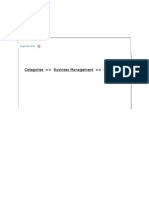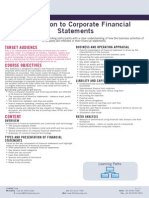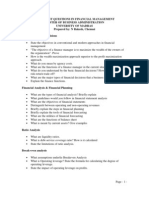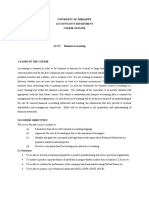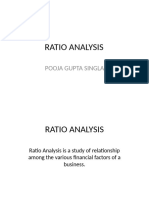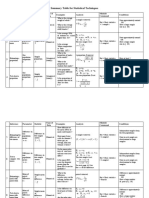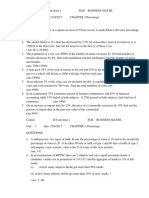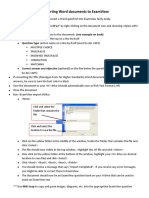0 ratings0% found this document useful (0 votes)
64 viewsImplementation Structure
The document outlines the topics that will be covered in an online MBA induction program. The program covers key topics in accounting, economics, finance, business math, statistics, Excel, PowerPoint, corporate communication, and business essentials. Topic areas include accounting principles, financial statements, macroeconomics, time value of money, Excel functions, presentations, fractions/percentages, probabilities, and report/proposal writing. The overall program aims to provide foundational business knowledge across various functional areas relevant for an MBA.
Uploaded by
amul65Copyright
© © All Rights Reserved
Available Formats
Download as PDF, TXT or read online on Scribd
0 ratings0% found this document useful (0 votes)
64 viewsImplementation Structure
The document outlines the topics that will be covered in an online MBA induction program. The program covers key topics in accounting, economics, finance, business math, statistics, Excel, PowerPoint, corporate communication, and business essentials. Topic areas include accounting principles, financial statements, macroeconomics, time value of money, Excel functions, presentations, fractions/percentages, probabilities, and report/proposal writing. The overall program aims to provide foundational business knowledge across various functional areas relevant for an MBA.
Uploaded by
amul65Copyright
© © All Rights Reserved
Available Formats
Download as PDF, TXT or read online on Scribd
You are on page 1/ 2
www.learnwithflip.
com
Program Outline- Online MBA Induction Program
The Young MBA Induction Pack
Chapter Topics - What will you learn?
The Concept of Business and its Classification: A brief discussion
on the concept of a Business, and how it is structured.
Accounting Principles: An overview of key accounting principles
(Going Concern, Conservatism, Accrual etc.)
The Accounting Process: The overall flow, right from Transaction
Accounting through General Ledger and Financial Statements. Also, the Double
Entry Method.
Recording Financial Transactions: How financial transactions are
recorded; Debit and Credit entries. Concept of suspense accounts.
Depreciation: Explanation of Depreciation and Amortization.
Trial Balance: Validation of entries using Trial Balance.
Profit & Loss (P&L) or Income Statement: The components -
measures of profitability and items of expense. The format of a P&L
Statement.
Cash Flow Statement: The concept of a Cash Flow Statement and its
break-down into Financing, Investing and Operational Cash Flows.
Financial Statements
Balance Sheet: A detailed discussion on various components of a
Balance Sheet, such as Assets, Liabilities, Owner's Equity, Contingent
Assets & Liabilities etc.
Live Examples: A discussion on the Balance Sheet with a live
example
Macroeconomics: Economic Systems and Circular Flow Model,
Gross Domestic Product (GDP), Gross National Product (GNP) etc.
Economics
Macroeconomics - The Indian Context: Reserve Bank of India and
its Functions, Reserve Ratios, Policy Rates, What are FDI and FII?
Balance of Payments. The budget and its components
Concept of Money: An introduction to money, as a standardized unit
of exchange.
Concept of Interest: Simple and Compound Interest.
Compounding and CAGR: Effective Interest (Yield); CAGR & its
Finance: Basics
usage
Time Value of Money: Future Value, Present value, NPV, IRR with
illustrations & the Excel functions.
Inflation: Inflation, Nominal Rate and Real Rate.
Excel Getting Started: Editing in Excel, Viewing options, Printing
Excel for reference.
Excel - Managing Data: Formatting Data, Find & Replace.
Excel - Calculations: Mathematical Operators, Logical Operators,
Tools for Business – Text Operators.
Excel & PowerPoint
Excel - Formulae: Sum, Product, Average, Sub Total.
Excel for Presentations: Different ways of Representation of Data,
Creating charts in Excel
PowerPoint for Managers: Creating good presentations, Presenting
Data, Working with Templates and Charts
Fractions, Decimals and Percentages: Used for any business
analysis
Discounts: Straight discounts, series of discounts and equivalent
single discounts: used for product pricing and devising marketing
strategies
Cost Price/Selling Price, Profit Margin – Mark up based on CP/SP:
used for product pricing and devising marketing strategies
Business Permutations and Combinations
Maths/Statistics
Averages: Mean, Moving Average, Median, Mode: Usage across
business situations
Measures of Dispersion: Std. Deviation, Variance: Usage across
business situations, especially risk management
Correlation, Regression etc.
Probability & Probability Distributions
Essential Grooming: Telephone Etiquette, Personal Meeting
Essential Grooming
Corporate Communication: How to write a formal mail? How to
& Corporate
Communication write a SOP, make a business presentation, - Dos’ and Don'ts.
Report Writing: How to write a report? Dos’ and Don’ts.
Contact:
Niveda UK
Educational Institutes Division
Finitiatives Learning India Pvt Ltd
niveda.uk@learnwithflip.com
www.learnwithflip.com Ph: 72047.41596
You might also like
- Economic Policies of The Delhi SultanateNo ratings yetEconomic Policies of The Delhi Sultanate5 pages
- FREE Music Lessons From Berklee College of Music: The Bass Player's HandbookNo ratings yetFREE Music Lessons From Berklee College of Music: The Bass Player's Handbook6 pages
- CSE Commerce and Accountancy Syllabus - 2015-2016 - UPSCsyllabusNo ratings yetCSE Commerce and Accountancy Syllabus - 2015-2016 - UPSCsyllabus4 pages
- SEBI Grade A - Live Webinar - 20th MarchNo ratings yetSEBI Grade A - Live Webinar - 20th March43 pages
- 06 21-22 Financial Wisdom in Interpreting KPIsNo ratings yet06 21-22 Financial Wisdom in Interpreting KPIs4 pages
- Financial Statement Analysis: Course DescriptionNo ratings yetFinancial Statement Analysis: Course Description4 pages
- Financial Modeling By: CA Tapan Kumar DasNo ratings yetFinancial Modeling By: CA Tapan Kumar Das16 pages
- Course-Structure-Syllabi-BCom 1-101-140No ratings yetCourse-Structure-Syllabi-BCom 1-101-14040 pages
- 261 Introduction To Corporate Financial StatementsNo ratings yet261 Introduction To Corporate Financial Statements1 page
- Week 12 Lecture Slides AIA Earnings Management & Accounting Frauds UpdatedNo ratings yetWeek 12 Lecture Slides AIA Earnings Management & Accounting Frauds Updated36 pages
- Ugc - Net 2018: Syllabus - Commerce (Code-08)No ratings yetUgc - Net 2018: Syllabus - Commerce (Code-08)4 pages
- InterpretationonFinancialStatementsByMr V AnojanNo ratings yetInterpretationonFinancialStatementsByMr V Anojan30 pages
- Finance Cheat Sheet - Formulas and Concepts - RM NISPEROSNo ratings yetFinance Cheat Sheet - Formulas and Concepts - RM NISPEROS27 pages
- Updated++FP&a+Resource+Guide+12!15!23 CompressedNo ratings yetUpdated++FP&a+Resource+Guide+12!15!23 Compressed185 pages
- VCE Internships: Smart Task 02: (Project Finance Analysis and Modelling)No ratings yetVCE Internships: Smart Task 02: (Project Finance Analysis and Modelling)2 pages
- About BNP Paribas India Solutions:: Classification: InternalNo ratings yetAbout BNP Paribas India Solutions:: Classification: Internal3 pages
- Commerce and Accountancy Accounting and Finance Accounting, Taxation & Auditing: 1. Financing AccountingNo ratings yetCommerce and Accountancy Accounting and Finance Accounting, Taxation & Auditing: 1. Financing Accounting3 pages
- Introduction: Defining The Role of Statistics in Business: Slide 1-1No ratings yetIntroduction: Defining The Role of Statistics in Business: Slide 1-112 pages
- Summary Table For Statistical TechniquesNo ratings yetSummary Table For Statistical Techniques4 pages
- Table 4 - Standard Normal Distribution (Continued) Table 5 - T-Distribution Table 4 - Standard Normal Distribution Table 6 - Chi-Square DistributionNo ratings yetTable 4 - Standard Normal Distribution (Continued) Table 5 - T-Distribution Table 4 - Standard Normal Distribution Table 6 - Chi-Square Distribution1 page
- Quantitative Aptitude-Ratio, Proportion and Variation - Key PointsNo ratings yetQuantitative Aptitude-Ratio, Proportion and Variation - Key Points2 pages
- Errata Statistics: Concepts and Controversies 5th Edition, 2nd PrintingNo ratings yetErrata Statistics: Concepts and Controversies 5th Edition, 2nd Printing3 pages
- BINUS University: Undergraduate / Master / Doctoral ) International/Regular/Smart Program/Global Class )No ratings yetBINUS University: Undergraduate / Master / Doctoral ) International/Regular/Smart Program/Global Class )2 pages
- Goods and Services Tax " Future in India": by - Joe Suhas Thambi Rahul Aurade MET Institute of Management, Nasik100% (1)Goods and Services Tax " Future in India": by - Joe Suhas Thambi Rahul Aurade MET Institute of Management, Nasik33 pages
- Avantax White Paper Referrals Final 3.18.22No ratings yetAvantax White Paper Referrals Final 3.18.224 pages
- 839812fd-9dc8-4e28-8f38-ad25ec07b7ca (2)No ratings yet839812fd-9dc8-4e28-8f38-ad25ec07b7ca (2)2 pages
- 8 Step Kotter Model of Change Template For PowerpointNo ratings yet8 Step Kotter Model of Change Template For Powerpoint4 pages
- Green Financing Investing in A Sustainable FutureNo ratings yetGreen Financing Investing in A Sustainable Future18 pages





















